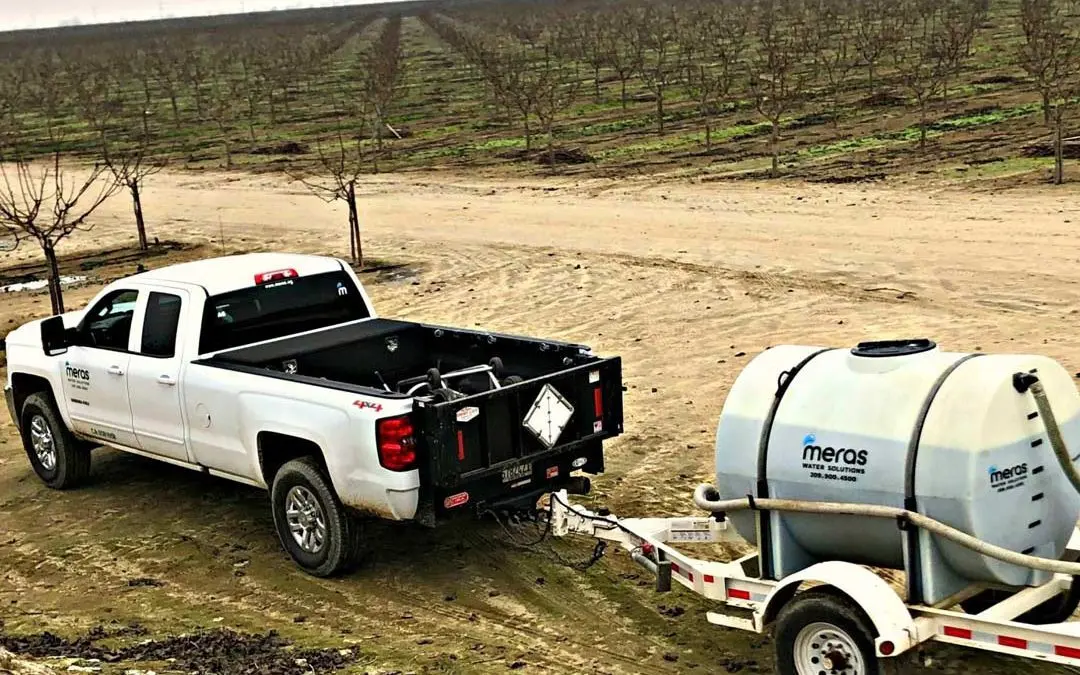Insights into Clean Chemistry

Reducing contaminants and microorganisms that affect agricultural water – choosing the right product
Sara Coble – 2019
In both the agricultural and industrial industries, chlorine is one of the most popular sanitizers for water. Chlorine is a tough product and is the go-to product for certain plugging challenges in your irrigation system. Even your reservoir will show marked improvement for algae control when using this product. Although, studies have shown that the accumulation of chlorine in irrigation water may lead to some damage in plant roots. Chlorination can restrain the conversion process and accumulation process of soil nitrogen. When using chlorine for sanitization; it can accumulate salt ions that can result in uneven nutrient distribution.
In water treatment, oxidizing agents are needed to change the structures of organic matter such as peat, algae, bacteria, plant debris, and pathogens that can negatively affect your crop. These agents are also needed to prevent plugging in micro-irrigation that can affect your water distribution to your crop. Though chlorine is known as a top disinfectant, there are some substitutions that may be more sustainable and healthier for crops in irrigation use. Two of which are peracetic acid (PAA) and chlorine dioxide (ClO2). These products are best utilized in maintenance programs.
Why Use Peracetic Acid?
According to Water Online, PAA is a clear, colorless liquid comprised of peroxide and acetic acid. It does not affect effluent toxicity. Therefore it does not need to be removed as chlorine does. Its use does not result in toxic residuals, mutagenic, or carcinogenic compounds after disinfection. PAA is an ideal antimicrobial agent due to its high oxidizing potential. PAA is hardly affected by organic compounds, which leaves most of the chemicals available to fight off contaminants. PAA is broadly effective against microorganisms and not deactivated by catalase and peroxidase. PAA is very efficient due to its quick contact time. After 20 minutes, with a dosage of 5mg/L, PAA can reduce fecal and total coliforms by 99.9%. PAA is most useful at lower concentrations because of its high oxidative capacities. Not only is it sufficient in reducing contaminants and microorganisms that affect agricultural water, but it is also practical in eliminating bacteria that cause legionella in plumbing. PAA is used in many sanitation practices, read more about the benefits and results of using PAA for disinfection here:
- https://www.wateronline.com/doc/epa-investigates-peracetic-acid-as-a-green-alternative-to-chlorine-0001
- https://www.foodsafetymagazine.com/magazine-archive1/augustseptember-2011/sanitizers-and-disinfectants-the-chemicals-of-prevention/
Sources for PAA:
Ditommaso, Savina, et al. “Peracetic Acid in the Disinfection of a Hospital Water System Contaminated With Legionella Species.” Infection Control & Hospital Epidemiology, vol. 26, no. 5, 2005, pp. 490–493., doi:10.1086/502573.
Lubello, Claudio, et al. “Municipal-Treated Wastewater Reuse for Plant Nurseries Irrigation.” Water Research, vol. 38, no. 12, 2004, pp. 2939–2947., doi:10.1016/j.watres.2004.03.037.
Martin, Laura. “EPA Investigates Chlorine Alternative.” Www.wateronline.com, 19 Nov. 2014, www.wateronline.com/doc/epa-investigates-peracetic-acid-as-a-green-alternative-to-chlorine-0001.
“Peracetic Acid.” National Center for Biotechnology Information. PubChem Compound Database, U.S. National Library of Medicine, pubchem.ncbi.nlm.nih.gov/compound/Peracetic-acid.
“Peroxyacetic Acid.” UC Davis Viticulture and Enology, UC Davis, wineserver.ucdavis.edu/industry-info/enology/methods-and-techniques/common-chemical-reagents/peroxyacetic-acid.
Pfuntner, Allan. “Sanitizers and Disinfectants: The Chemicals of Prevention.” Food Safety Magazine, Aug. 2011, www.foodsafetymagazine.com/magazine-archive1/augustseptember-2011/sanitizers-and-disinfectants-the-chemicals-of-prevention/.
Why Use Chlorine Dioxide?
Though chlorine is in the name of chlorine dioxide, there is a significant difference between the two chemistries. Chlorine Dioxide is a yellow-green gas that is produced by a reduction of sodium chlorate and an agent such as hydrochloric acid. Chlorine dioxide is the only biocide that is a molecular free radical. It has 19 electrons and tends to gravitate towards substances that give off or take up an electron. Chlorine dioxide only responds to substances that give off electrons. When used in water treatment, chlorine dioxide inactivates biofilm; this activity is what produces chlorite ions. Chlorite ions continue to feed off the biofilm even when the chlorine dioxide is no longer there. Compared to chlorine, chlorine dioxide is much more efficient over a wider range of pH levels. Much like PAA, chlorine dioxide is also barely affected by organic compounds allowing more protection against pathogens and other microbial bacteria.
Here is a link to a study done in collaboration between UC Davis and the University of Murcia where chlorine dioxide was tested as an alternative to chlorine as a disinfectant for irrigation water for baby spinach:
https://journals.plos.org/plosone/article?id=10.1371/journal.pone.0199291
Chlorine has proven itself as a product to use on tough issues and initial remediation, there are other products that may be able to help and have a less negative impact on your crop in the long run.
Sources for Chlorine Dioxide:
“Chlorine Dioxide.” National Center for Biotechnology Information. PubChem Compound Database, U.S. National Library of Medicine, pubchem.ncbi.nlm.nih.gov/compound/Chlorine-dioxide.
“Disinfectants: Chlorine Dioxide.” Lenntech Water Treatment & Purification, www.lenntech.com/processes/disinfection/chemical/disinfectants-chlorine-dioxide.htm.
Truchado, Pilar, et al. “Impact of Chlorine Dioxide Disinfection of Irrigation Water on the Epiphytic Bacterial Community of Baby Spinach and Underlying Soil.” PLOS ONE, Public Library of Science, 18 July 2018, journals.plos.org/plosone/article?id=10.1371%2Fjournal.pone.0199291.
Zheng, Youbin, et al. “Chlorine Dioxide.” Greenhouse and Nursery Water Treatment Information System, University of Guelph, www.ces.uoguelph.ca/water/PATHOGEN/ChlorineDioxide.pdf.
“Chlorine Dioxide.” National Center for Biotechnology Information. PubChem Compound Database, U.S. National Library of Medicine, pubchem.ncbi.nlm.nih.gov/compound/Chlorine-dioxide.
“Disinfectants: Chlorine Dioxide.” Lenntech Water Treatment & Purification, www.lenntech.com/processes/disinfection/chemical/disinfectants-chlorine-dioxide.htm.
Truchado, Pilar, et al. “Impact of Chlorine Dioxide Disinfection of Irrigation Water on the Epiphytic Bacterial Community of Baby Spinach and Underlying Soil.” PLOS ONE, Public Library of Science, 18 July 2018, journals.plos.org/plosone/article?id=10.1371%2Fjournal.pone.0199291.
Public Library of Science, 18 July 2018, journals.plos.org/plosone/article?id=10.1371%2Fjournal.pone.0199291.
Zheng, Youbin, et al. “Chlorine Dioxide.” Greenhouse and Nursery Water Treatment Information System, University of Guelph, www.ces.uoguelph.ca/water/PATHOGEN/ChlorineDioxide.pdf.
